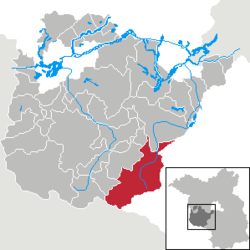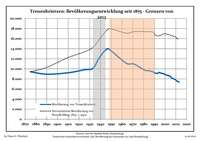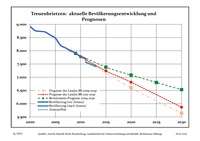Treuenbrietzen
| Treuenbrietzen | ||
|---|---|---|
|
Saint Mary Church | ||
| ||
 Treuenbrietzen | ||
Location of Treuenbrietzen within Potsdam-Mittelmark district  | ||
| Coordinates: 52°05′50″N 12°52′16″E / 52.09722°N 12.87111°ECoordinates: 52°05′50″N 12°52′16″E / 52.09722°N 12.87111°E | ||
| Country | Germany | |
| State | Brandenburg | |
| District | Potsdam-Mittelmark | |
| Government | ||
| • Mayor | Michael Knape (Treuenbrietzener Bürgervereins) | |
| Area | ||
| • Total | 211.33 km2 (81.59 sq mi) | |
| Population (2015-12-31)[1] | ||
| • Total | 7,379 | |
| • Density | 35/km2 (90/sq mi) | |
| Time zone | CET/CEST (UTC+1/+2) | |
| Postal codes | 14929 | |
| Dialling codes | 033748 | |
| Vehicle registration | PM | |
| Website | Treuenbrietzen | |
Treuenbrietzen is a town in the Bundesland of Brandenburg, Germany.
History

The town has existed since the Middle Ages and the first written evidence about it is from 1217. From 1348 to 1350 the town remained loyal to the Wittelsbach Louis V the legitimate Margrave of Brandenburg since 1323 against the revolt of the False Waldemar. This event was the origin of the town's name "true" or "faithful" Brietzen. During the Reformation, Martin Luther came in 1537 to preach in the town, but his way to the church was blocked. He preached instead under a basswood, or lime tree, which is called to this day the Lutherlinde.
During the Industrial Revolution, several textile factories were founded in the town.
After the opening of the Sachsenhausen concentration camp in 1936, a sub-camp was opened in the town, where slave labourers were forced to work in a weapons plant. With the approach of the Red Army, on April 23, 1945, the Wehrmacht executed 127 Italian POWs, who were interned in the camp.[2] Between April 24 and May 1, 1945, the region was the scene of the Battle of Halbe between the Wehrmacht and the Red Army.
The town was first occupied by the 5th Guards Mechanised Corps on April 21, 1945 but German Wehrmacht and Waffen SS troops managed to return for a short time, finally retreating on April 23. Subsequently Red Army soldiers murdered an estimated 1000 civilian inhabitants of the town during the last days of April and early days of May in a nearby forest. In addition many women were raped.[3] Relatives registered some 251 deaths with the municipal register office, while eyewitnesses, ordered to bury the victims at the local cemetery, stopped counting after they had buried 721 dead,[4] today 125 known graves exist.[5]
The town suffered considerable damage during the war, although the historic town centre remained intact. Since 1945, the town's economy has been concentrated on cattle farming. In 2005, it had 8,548 residents. The mayor of Treuenbrietzen is Michael Knape, of the Treuenbrietzener Bürgerverein (Treuenbrietzen Civic Association).

Demography
 Development of Population since 1875 within the Current Boundaries (Blue Line: Population; Dotted Line: Comparison to Population Development of Brandenburg state; Grey Background: Time of Nazi rule; Red Background: Time of Communist rule)
Development of Population since 1875 within the Current Boundaries (Blue Line: Population; Dotted Line: Comparison to Population Development of Brandenburg state; Grey Background: Time of Nazi rule; Red Background: Time of Communist rule) Recent Population Development (Blue Line) and Forecasts
Recent Population Development (Blue Line) and Forecasts
|
|
|
|
Famous residents
See also
Notes
- ↑ "Bevölkerung im Land Brandenburg nach amtsfreien Gemeinden, Ämtern und Gemeinden 31. Dezember 2015 (Fortgeschriebene amtliche Einwohnerzahlen auf Grundlage des Zensus 2011)". Amt für Statistik Berlin-Brandenburg (in German). 2016.
- ↑ Die Tageszeitung Ein verschüttetes Verbrechen
- ↑ welt.de Das Massaker der Roten Armee in Treuenbrietzen
- ↑ berliner-zeitung Das Massaker von Treuenbrietzen
- ↑ Claus-Dieter Steyer, , Der Tagesspiegel online June 21, 2006 , viewed November 11, 2006 at "Stadt ohne Männer" (City without men)
- ↑ Detailed data sources are to be found in the Wikimedia Commons.Population Projection Brandenburg at Wikimedia Commons
External links
| Wikimedia Commons has media related to Treuenbrietzen. |
- Treuenbrietzen Homepage (German)
- Treuenbrietzen Heritage Society (German)

